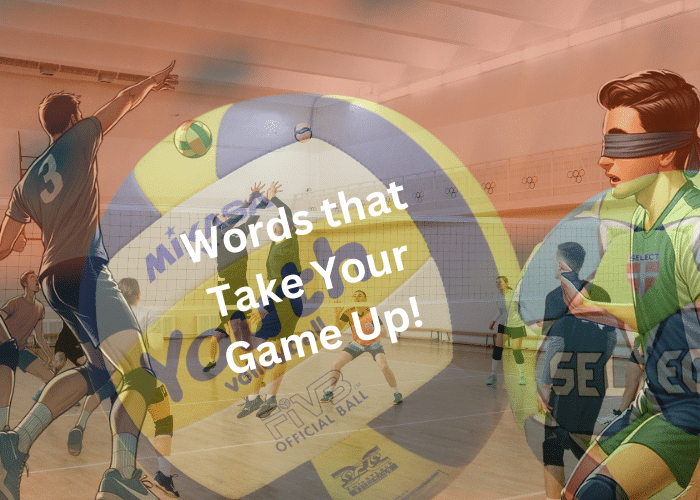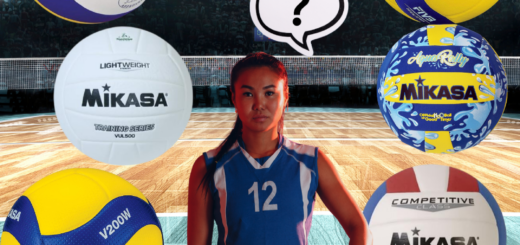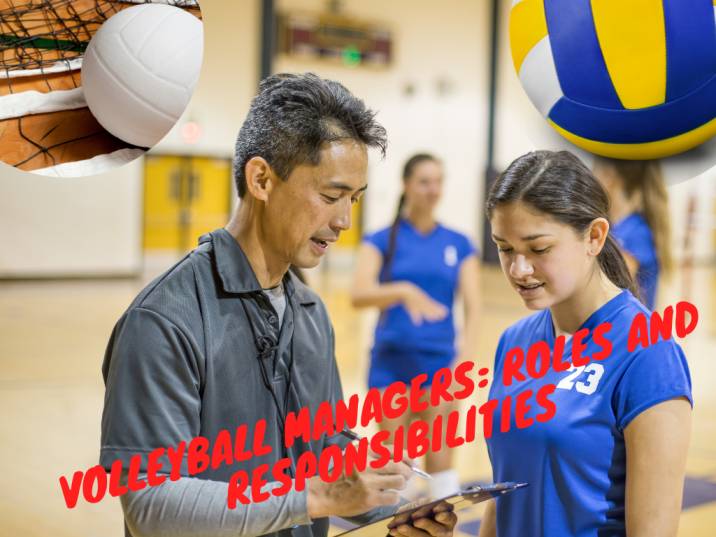Volleyball Drills for Communication

One thing that sets extraordinary volleyball teams apart from others is communication. Before wasting time, let’s have a deep look at volleyball drills for communication that will take your team to places.
Call the Ball Drill
This drill makes players ready to avoid those awkward “I thought you got it” moments.
It teaches players how to be vocal and assertive and let the right player hit the ball in a high-pressure situation instead of everyone rushing for the same ball.
Here is how to practice this drill:
- Split your players into their usual positions on the court to simulate a real-game scenario.
- Begin the drill with typical volleyball plays, such as serves, spikes, or regular volleys.
- Instruct all players to loudly call “mine” or a similar phrase when they decide to go for the ball.
- After a few takes, rotate the players to different positions and repeat the exercise.
- To make the drill more challenging, include different game-like situations such as free balls, spikes, or serves, requiring players to quickly decide and communicate who takes the ball.
While you may have specialized roles in the actual game, this drill will foster bonding among teammates and let them practice on others’ calls.
Blindfolded Drill
In this drill, “seeing” the court takes on a whole new meaning.
This game is all about listening carefully and moving in sync, a bit like a strange game of Marco Polo, but with a volleyball twist!
By relying solely on auditory cues, players learn to trust their partner’s guidance and enhance their ability to follow verbal instructions. The goal here is never to be perfect but to develop a sense of responding to your teammates’ voices.
Here are the steps:
- Divide your team into pairs. In each pair, one player will be blindfolded, and the other will serve as the guide.
- The guide’s job is to direct their blindfolded partner using only their voice. They should give clear, concise instructions on where to move, when to stop, and how to react to the ball.
- Start with simple movements around the court without a ball. Once the pairs get comfortable, introduce a volleyball. The guide should softly toss the ball towards the blindfolded player and direct them to hit it back.
- After a set time, switch roles so that each player gets a chance to be both the guide and the blindfolded player.
Make sure the area is clear of any obstacles, and monitor the activity closely to prevent any accidents.
Turn and Burn Drill
The Turn and Burn Drill in volleyball is a high-intensity exercise focusing on enhancing players’ communication with each other, agility, quickness, and reaction time.
Here is how to do it:
- Players line up at one end of the volleyball court, facing the net.
- A coach or another player is standing on the opposite side of the net and sends the ball far away from the players. (in the same courtside where players are standing)
- All players in the team will turn and run towards the ball. The one who wants to receive the ball must call it out loudly like “MINE.”
- The receiving player will toss the ball in the air and set it up for the setter. Now, the potential setters will call for the hit, and eventually, the spiker will spike the ball back to the opposite side.
- The drill is repeated several times, maintaining high intensity and speed throughout.

Between the Trees Drill
The Between the Trees Drill is designed to enhance decision-making and communication between back-row players. When a downball is sent between two key players, they must quickly decide who will receive and set up the ball for a return play.
Here is the blueprint:
- Place two players in key positions in the back row, spaced apart.
- The coach or a designated tosser sends a downball between the two players.
- The players must quickly decide and communicate who will receive the ball.
- The receiving player passes the ball to the other player, who then either spikes or sends it over the net.

Two Ball Drill
The Two Ball Drill introduces chaos with two balls in play simultaneously during a scrimmage. This setup forces the entire team to communicate effectively and manage stress efficiently.
- Initiate the scrimmage with two volleyballs in play at the same time.
- Players must keep up constant communication to manage both balls.
- The drill trains players to stay calm and coordinated under chaotic conditions.
Pepper Drill with Communication
The traditional pepper drills always come to rescue volleyball players, sometimes in its original form and sometimes in its offshoots.
Think of this drill as a volleyball version of “Simon Says,” but instead of following random commands, you are predicting and reacting to your partner’s next volleyball move.
By verbally announcing each type of hit, players not only refine their technical skills but also enhance their ability to anticipate and react to their teammate’s actions.
Here’s how to conduct this drill:
- Start by pairing your players. Each pair should have enough space to comfortably pass the ball back and forth.
- Have the pairs start with the traditional pepper drill, which involves a cycle of bumping, setting, and spiking the ball between the two players.
- Now is the time to bring the twist. Instruct the players to call out the type of hit they are about to make before they make it. For instance, before bumping the ball, a player should shout “bump,” before setting, “set,” and before spiking, “spike.” This might seem simple, but it will develop the listening ability of the teammates and allow them to respond to others’ calls.
- The goal is for players to perform the hits accurately while effectively communicating their intentions.
- After a set time, have players switch partners to practice communicating with different teammates so that each player gets comfortable with the other.
The same drill can also be done with one player standing at each side of the court to help them communicate from far away.
Scramble Drill to improve communication
This drill is about finding order in the chaos and turning a potential volleyball ‘oops’ moment into a strategic ‘a-ha’ moment.
The Scramble Drill is designed to mimic the unpredictable and chaotic nature of a real volleyball game.
It forces players to quickly organize, communicate, and adapt to rapidly changing situations on the court. This drill is excellent for improving team communication under pressure, enhancing situational awareness, and developing quick decision-making skills.
Here’s how you can implement the Scramble Drill:
- Place several volleyballs randomly on one side of the court.
- Split your team into two groups. One group will be the active participants in the drill and be placed on the empty side of the court, while the other group will be on the side with scattered balls.
- Both groups will scatter around the court. The receiving group must quickly organize themselves to defend or receive the incoming scattered balls.
- The servers will need to throw one ball at a time, and the receiving players must constantly communicate with each other about their intended actions. This communication is key to successfully managing the chaos. The moment the volleyball touches the ground, other players at the serving end throw the next ball in play without waiting even for a second.
- To add complexity to this drill, the serving side would toss in additional balls at different intervals or shout out specific commands (like “free ball” or “attack”). This forces the receiving team to adjust their strategy on the fly.
- After a set duration or number of balls played, switch the groups so that each player gets an opportunity to participate in the drill.
Pump up the Volume Drill
This is the ultimate drill to let each and every player master the art of communication. Here is how to perform this drill.
- Start the volleyball rally as normal. No player will be allowed to talk at all. Absolutely pin-drop silence.
- Once you are done with a couple of rallies, let the setters from each team speak. They will be the ones who will give commands to everyone in their respective teams.
- After that, let the libero speak and keep everyone else silent. This time, libero will run the team verbally.
- Repeat this strategy and let only one player from each team speak in every rally. That player should be the one who will decide the team strategy verbally.
This is a great strategy to make an unbreakable bond between every single player. With this, every player will have an opportunity to listen to others’ instructions.
Name Call Spike Drill
In a way, this drill turns a regular spike practice into a bit of a ‘name game’ with a volleyball twist. It is like adding a shout-out feature to every spike, keeping everyone engaged and on their toes – literally!
The Name Call Spike Drill is an effective exercise for sharpening a team’s alertness and direct communication skills, particularly during offensive plays in volleyball.
In this drill, the spiker’s task is to call out the name of the player they are targeting with their spike. This approach not only enhances the spiker’s focus and precision but also keeps the receiving players on their toes, ready to respond all the time.
Here’s how to execute this drill:
- Arrange your players in their usual positions for a spike drill. This typically involves a setter setting up the ball for the spiker, with defenders positioned to receive the spike.
- Tell the spikers that they must call out the name of the player they intend to target with their spike. The call should be made just before or as they jump for the spike.
- The players on the receiving end should be ready to respond to their name being called. This increases their alertness and prepares them to react quickly to the spike.
- Make sure to rotate roles regularly so that all players get the chance to practice both spiking and receiving under these conditions.
- The spiker should aim to target the called player accurately, and the receivers should focus on their defensive response. The communication aspect should be emphasized as much as the physical execution of the spike.
- Offer feedback to both the spikers and the receivers on their accuracy, communication, and response times.
Rotation Communication Drill
This drill lets you navigate the court without getting lost in the rotation shuffle.
It is designed to enhance players’ awareness and verbalization of their positions and roles during the dynamic movements of a volleyball game. Effective communication during rotations maintains team structure and ensures everyone knows their responsibilities.
Here’s how to conduct this drill:
- Begin with your team in their starting rotation positions. As the drill progresses, they will rotate as they would in a regular game.
- Instruct players to loudly call out their new positions and the responsibilities associated with those positions every time they rotate.
- Start a scrimmage or a sequence of plays, requiring the team to continue rotating as they would in a game. Do not forget to keep communicating throughout.
- Pay special attention to the transition phases of the game, such as after a serve or when switching from offense to defense. These are critical moments for communication.
- Urge players to be specific in their communication, not just calling out positions but also their actions (like “setting up for a spike” or “ready for a block”).
Serve Receive Communication Drill
This communication drill is all about calling dibs on the ball, allowing teams to enhance quick decision-making and effective verbal communication among players.
In volleyball, efficiently handling the serve receive can set the tone for the entire rally, and clear communication is key to avoiding confusion and ensuring a smooth transition to offense.
Here’s how to perform this drill:
- Organize your team into two groups: servers and receivers. The servers will line up on one side of the court and the receivers on the other.
- The drill begins with servers serving the ball across the net. The type of serve can vary (underhand, overhand, jump serve) to simulate different game situations.
- Receivers must quickly determine who will receive the service and communicate it clearly. They should use phrases like “I’ve got it, short serve” or “yours, deep ball.”
- Include various serve types and trajectories, forcing the receivers to adapt and communicate differently each time. This helps in developing adaptability and quick thinking.
- After a set number of serves, switch the roles so that each player gets experience in both serving and receiving.
- As the team gets better in communication, increase the complexity by adding movement before the serve, changing server positions, or serving faster.
Net Communication Drill
The net communication drill is an excellent exercise for enhancing communication skills in net play scenarios in volleyball.
This drill emphasizes the importance of clear and timely communication between teammates when the ball is close to the net, a critical area in volleyball where quick decisions and coordinated team efforts are essential.
Here’s how to conduct this drill:
- Arrange a row of players on each side of the net, facing each other.
- Begin the drill by volleying the ball over the net. The objective is to keep the ball in play, going back and forth over the net.
- Players must loudly and clearly communicate their intentions when the ball approaches them. They should call out if they are going to take the ball and how they plan to pass it – for example, “mine, setting!” or “yours, dig!”
- After a set number of volleys or time, rotate the players so everyone gets experience in different positions along the net.
- To make the drill more game-like, include different types of hits and plays, such as blocks, spikes, and tips.
Setter Communication Drill
The setter communication Drill synchronizes the efforts of setters and hitters in volleyball.
This drill emphasizes the importance of clear and effective communication between these two key positions. Effective setter-hitter communication ensures that the team executes well-timed and precise attacks, making the offense more dynamic and difficult to defend against.
Here’s how to perform the Setter Communication Drill:
- Organize your players so that setters and hitters are paired or grouped together. This allows them to focus specifically on their communication with each other.
- During the drill, hitters should communicate to the setter the type of set they prefer for each play. They might call for a “quick set,” “high outside,” “back set,” etc., depending on their position and the game strategy.
- The setter must acknowledge the hitter’s call and either deliver the requested set or communicate back if they choose a different set based on the situation. This could be due to the setter’s position, the defense setup, or other tactical reasons.
- Run through various game-like scenarios where hitters need different types of sets. This helps both setters and hitters adapt to different game situations and understand each other’s capabilities and preferences.
- Ensure that setters get the chance to work with different hitters. It will help you enhance the overall team chemistry and understanding among players in different attacking positions.
- Do not forget to give due attention to the importance of timing in the setter-hitter interaction. The communication should be quick and precise to ensure effective play execution.
Cross-Court Communication Drill
The Cross-Court Communication Drill is designed to enhance long-distance communication skills in volleyball, focusing on both verbal cues and non-verbal signals like eye contact.
This drill helps players improve their ability to communicate effectively across the entire court, which is crucial for coordinating plays during a game where distance and noise can be challenging factors.
Here’s how to conduct the Cross-Court Communication Drill:
- Split your team into two groups and position them on opposite sides of the court. Each player should have a corresponding player diagonally across from them on the other side.
- Players begin by making eye contact with their diagonal partners and using clear, loud verbal cues to initiate the pass. For example, they can call out their partner’s name followed by “ready” or “sending.”
- Players then pass the ball diagonally across the net to their partner. The focus should be on accurate passes and maintaining communication throughout. Players should continue to communicate during the pass, calling out instructions or adjustments as needed (e.g., “higher pass,” “faster,” “to your left”).
- After a set number of passes, players can rotate to communicate and pass with a different teammate. This variation ensures that players get used to communicating with different team members.
Serve Receive Communication Drill
It’s time to call dibs on serve reception.
The Serve Receive Communication Drill is a vital training exercise for volleyball teams, focusing on enhancing strategies and communication during the serve-receive phase of the game.
This drill trains receivers to loudly and clearly communicate who will take the serve and the type of pass they plan to use.
Here is the method:
- Split your players into two groups. One group will serve, while the other will be in the receiving positions.
- The drill begins with members from the serving group sending serves over the net to the receivers.
- Players in the receiving group must communicate clearly who will receive the serve. They should loudly call out, for example, “I got it, bump pass!” or “Yours, setting!”
- To simulate real-game scenarios, servers should vary their serves (e.g., short serves, long serves, floaters). This challenges receivers to adapt their communication and techniques accordingly.
- After a set number of serves, switch the roles so each player gets experience in both serving and receiving.
Four Corners Drill
The Four Corners Drill positions one player in each corner of one side of the court or any square-shaped pattern.
No one knows the pattern that will be followed in the play. This drill is great for improving spatial awareness, communication skills, and ball control.
Here’s how to set up and run the Four Corners Drill:
- Position Players in Each Corner: Place one player in each of the four corners of a moderate-sized square.
- Begin by having one player initiate the pass to the player of their choice.
- Players should loudly call out the name of the teammate to whom they are passing the ball. This ensures that the intended player is ready to receive.
- As the game progresses, increase the passing speed and incorporate different types of passes (like bump, set, or spike).
Target Practice Drill
The Target Practice Drill is a fantastic exercise to enhance precision and coordination in volleyball, with a strong emphasis on communication.
By setting up targets on the court and requiring players to direct the setter, this drill encourages teamwork in aiming for specific goals.
Here’s how to conduct the Target Practice Drill:
- Place targets on the court, such as cones, mats, or designated areas marked with tape. These should be spread out and placed in strategic locations, mimicking areas where players might aim during a game.
- Assign players to different roles – setters, hitters, and spotters. Spotters will communicate with the setter and hitter to aim for the targets.
- The setter starts the drill by setting the ball for the hitter. The spotters communicate with both the setter and the hitter, directing them on where to aim the set and hit to strike the targets.
- Spotters must be clear and precise in their instructions, while the setter and hitter must listen and coordinate their actions accordingly. Even setters and hitters can communicate which spot they want to hit so that the play can be adjusted accordingly.
- With time, move the targets to different locations or introduce smaller targets to increase the challenge.
Final Words
Better communication means better results. Practicing these skills require ample stamina that only comes when you have mastered the drills beginners like. Once you do that, it is only a matter of time that you will be able to crak advanced volleyball drills as well that will take you to places.

Ahmed is the founder of Ball and Net Sports, a platform where he writes about volleyball.
As a professional volleyball player who has participated in various national and international level volleyball competitions, he loves to teach other volleyball enthusiasts about the game.
He is now a professional volleyball coach who organizes volleyball camps and social events for talent hunting for top volleyball teams.
As a volleyball talent-hunting specialist, he loves to teach people how they can make their game better in the fast-paced volleyball environment where it is extremely difficult to get quality content free of cost.



